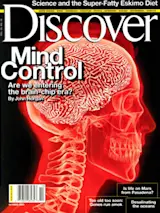Teleportation, the science-fiction fantasy of moving objects instantaneously through space from one location to another, has become reality—an achievement both more subtle and spectacular than many early news reports indicated. “This has nothing to do with ‘Beam me up, Scotty,’ ” says experimental physicist Rainer Blatt of the University of Innsbruck in Austria. “What we’re doing is transferring all that we can know of one atom to another atom at a different site, so that the final atom becomes indistinguishable from the first.”
Blatt’s group and a team headed by David Wineland of the National Institute of Standards and Technology in Boulder, Colorado, independently performed this physics sleight of hand. Both used three atoms, starting with atom A, the source for the teleported information. Laser pulses linked atom B with atom C in such a way that they interacted even when separated by vast distances (one of the strange truths of quantum physics). Next, laser pulses entangled atoms A and B. Then for the bizarre part: Atom C, because it was previously entangled with B, became imprinted with atom A’s information—in this case, a pattern in the spin of its electrons.
The technique could be a breakthrough for computers that use subatomic particles, rather than transistors, to store and process information. Teleportation allows the computational bits to communicate and pass along information without having to be in physical contact with each other. Physicists have previously teleported data using photons—particles of light—but photons are soon absorbed by whatever they strike. “With atoms, we can store the information for a long time,” Blatt says. A modest, prototype quantum computer may be only a few years away, says Wineland.














